If you’ve come all the way to Phoenix from another point in the world, then you absolutely must take a day to visit the Grand Canyon, the natural wonder of the world Arizona is known for. Formed by a geologic erosion in the desert, showcasing different rock layers, the canyon’s sheer size at 277 miles, up to 18 miles in width and depths of a mile, overwhelms visitors. But it is its beauty rather than its size that makes it memorable. The changing colors of the rocks combined with their sharp edges, along thousands of formations as far as you can see, will leave you in awe.
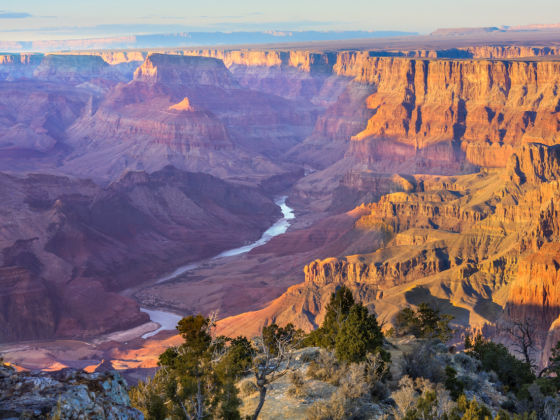
The Ultimate Day Trip to the Grand Canyon From Phoenix
This unique combination of geological form, size, and color makes this natural wonder deservedly popular. You simply need to see it, even if you have to fight the crowds while there. The South Rim of the park is open year-round, and entrance fees are $35 per vehicle, $30 per motorcycle, or $15 for someone arriving on foot for a seven-day pass; annual passes are $70 for just the Grand Canyon, but it’s well worth springing for the $80 pass to all national parks at that point.
Though it makes for a long day, it is possible to visit the Grand Canyon from Phoenix in one day. And while your main destination is the canyon, you have an opportunity to see a few other sites, including ancient ruins, a city in the pine forests, and a Native American trading post. So make sure you get up early and hit the road for the best experience of your Arizona vacation.
Stop at Montezuma Castle National Monument.
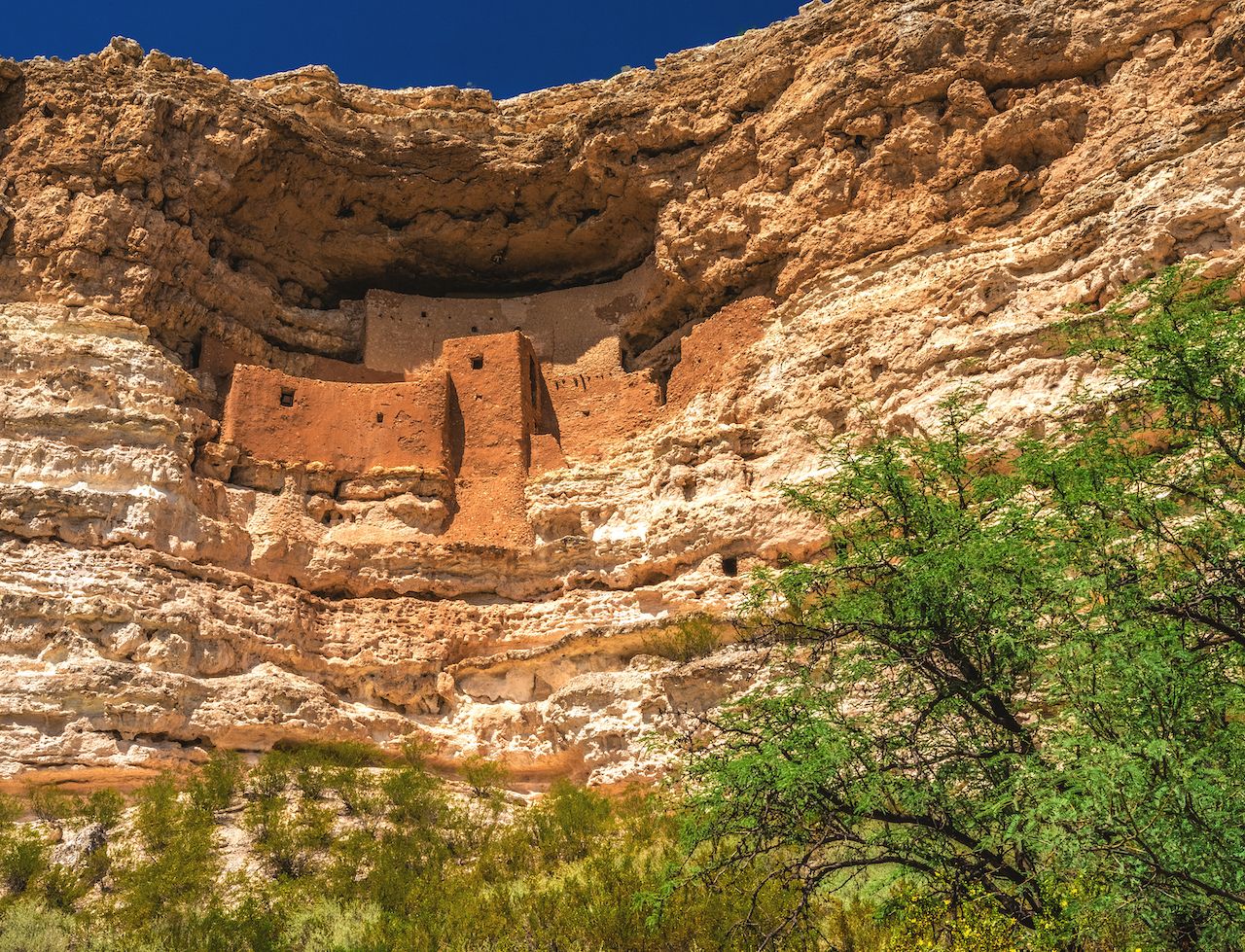
Photo: Abbie Warnock-Matthews/Shutterstock
Get up really early and grab a quick breakfast, then head up North towards Flagstaff on I-17. After about 30 minutes on the road, you’ll see signs for Montezuma Castle National Monument.
Though it has nothing to do with Montezuma, and it’s not really a castle, this national park is worth a stop. You’ll learn about the ancient inhabitants of the Arizona desert, who built a structure impressive enough to have early explorers call it a castle and believe it to be the home of the famous Aztec king.
While Montezuma and the Aztecs lived thousands of miles South of this area, the ancient inhabitants of the desert were just as ingenious. They carved entire villages inside the walls of the surrounding desert limestone. Called cliff dwellings, these sites are prevalent in the US Southwest, and Montezuma Castle is one example.
The five-story-high structure you’ll visit here, built around 1150, housed about 50 people. Called Sinagua, meaning without water, those who lived here were the ancestors of the modern Pueblo people of Arizona, including the Hopi and Yavapai.
Even the name Sinagua is a misnomer though. When you visit, you’ll see a canal the ancient villagers built. While in the summer months it looks like a dry riverbed, in the winter you’ll see water flowing through it.
Give yourself about 30 minutes to an hour to visit the site, then get back on I-17 North and drive to Flagstaff.
Take a break in Flagstaff, the Arizona city in the pines.
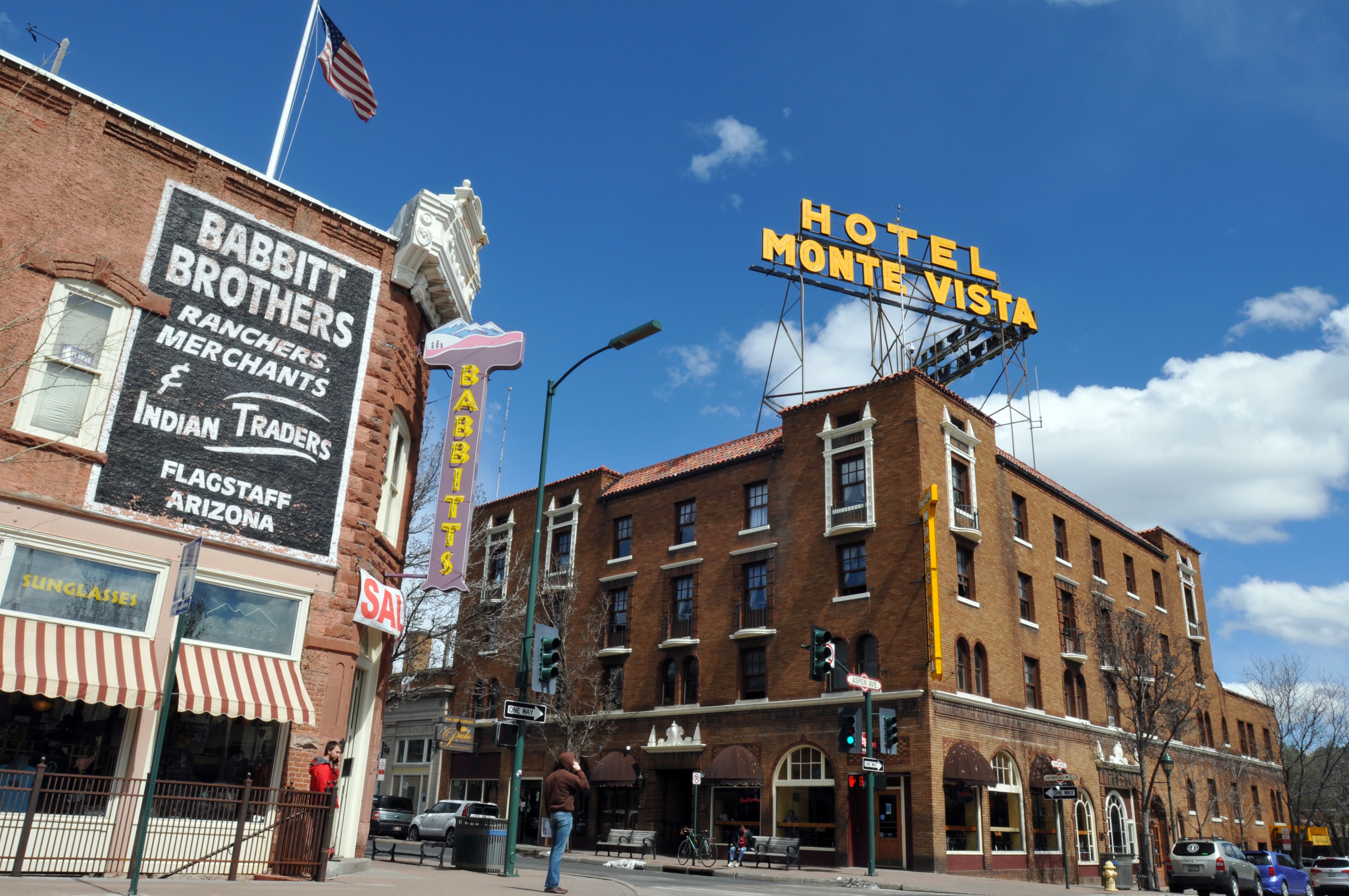
Photo: BD Images/Shutterstock
At the foot of the highest mountain range in Arizona, the San Francisco Peaks — also known by locals by its original name, the Kachina Peaks — Flagstaff is surrounded by tall ponderosa pines. In stark contrast with the desert where the trip began only two hours earlier, the town offers a respite from the sweeping vistas, low vegetation, and heat, especially if you’re visiting in the summer.
Take some time to enjoy the surroundings and the fresh pine-scented air here. After parking at the Historic Train Depot and Visitor Center, walk inside to learn about the town and its surroundings; you can even watch a train go by if you’re there at the right time. Then walk across the street and stroll through Downtown Flagstaff, stopping for an espresso at Firecreek Cafe.
Offering a variety of restaurants for all tastes, Flagstaff is a good place to grab lunch if you stay here long enough. However, for authentic Southwestern fare and setting, wait until your next stop for your midday meal.
Drive on to the Grand Canyon.
From here, you have two choices to drive on towards the Grand Canyon. If you are visiting mid-week, and off-season, you could take Route 180 Northwest towards the South Entrance to the park. However, this route is busy and the main entrance gets crowded, with long lines of cars waiting at the gate. To avoid standing in line to get in, and drive through some beautiful high-desert scenery, we recommend taking Highway 89 towards Cameron.
Stop at the Cameron Trading Post for lunch and shopping.
Stop at the historic Cameron Trading Post for lunch at the restaurant on the premises, where the menu reflects its Native American roots though you can get Mexican and American fare, too. We recommend trying the Navajo tacos made with authentic fry bread, ground beef, beans, and mild green chilis. The generous portions might be enough to share.
Then, visit the art gallery and browse through Native American arts and crafts, including Navajo etched pottery, sand paintings, jewelry, and rugs. If you are there at the right time, visit the rug room and watch a weaver demonstrate the art of weaving a Navajo rug.
After this stop, continue on the scenic Route 64, also called Desert View Drive, to the East Entrance of the Grand Canyon.
Desert View Point and the Watchtower

Photo: segawa7/Shutterstock
Stop at the Desert View Point for your first glimpse of the Grand Canyon and some of the most spectacular views of the famous landmark. This viewpoint is one of the few places on the rim where you can see the Colorado River at the bottom of the canyon and the Painted Desert to the east.
But the view is only the beginning. Desert View offers a look into the history, art, architecture and Native American culture. The Watchtower, built in 1932, is one of the best works of renowned architect Mary J. Colter, who modeled it after structures built by the ancient Puebloan people. Take your time walking up the tower, and enjoy the original murals of known Hopi artist Fred Kabotie on the first landing. Climb up the spiral stairway to the Kiva Room, and look through the telescopes for a different view of the canyon, the river below, and the Painted Desert in the far distance.
The Main Visitor Center
Continue on to the Main Visitor Center and park your car. Learn about the Grand Canyon from the exhibits, pick up a map and brochure, or buy a ticket to one of the tours or programs you might like to join. Then, you have a choice of taking the free shuttle through the rim, walking, or renting a bike for your further explorations.
Walk the Trail of Time.
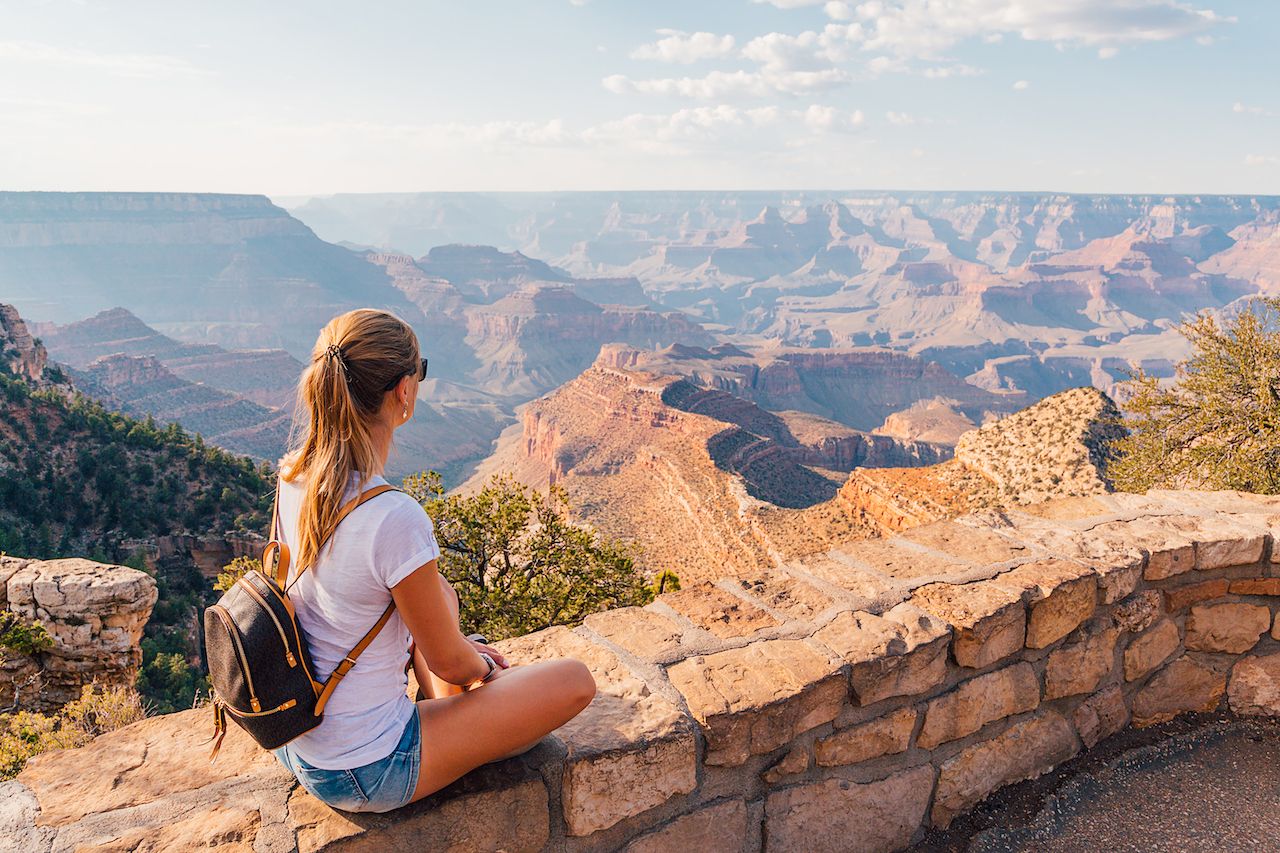
Photo: Ingus Kruklitis/Shutterstock
After a short stop at the Visitor Center, we recommend walking the Trail of Time to the Grand Canyon Village for great views of the Canyon and even solitude on some stretches. At 1.7 miles, the Trail of Time is short enough to enjoy walking it without feeling overwhelmed. This interpretive section of the Rim Trail uses age markers, signs, and rock samples to represent the geological timeline of the Grand Canyon. The exhibits along the trail showcase rocks of the canyon taking visitors on a 2,000 million years old geological journey through the history of the Earth. Each brass marker represents one million years of geology, where you can stop and learn about the layer of rocks in the Canyon representing each particular time. Enjoy this walk through geologic history and gorgeous views while making your way to the Grand Canyon Village.
Grand Canyon Village Historic District
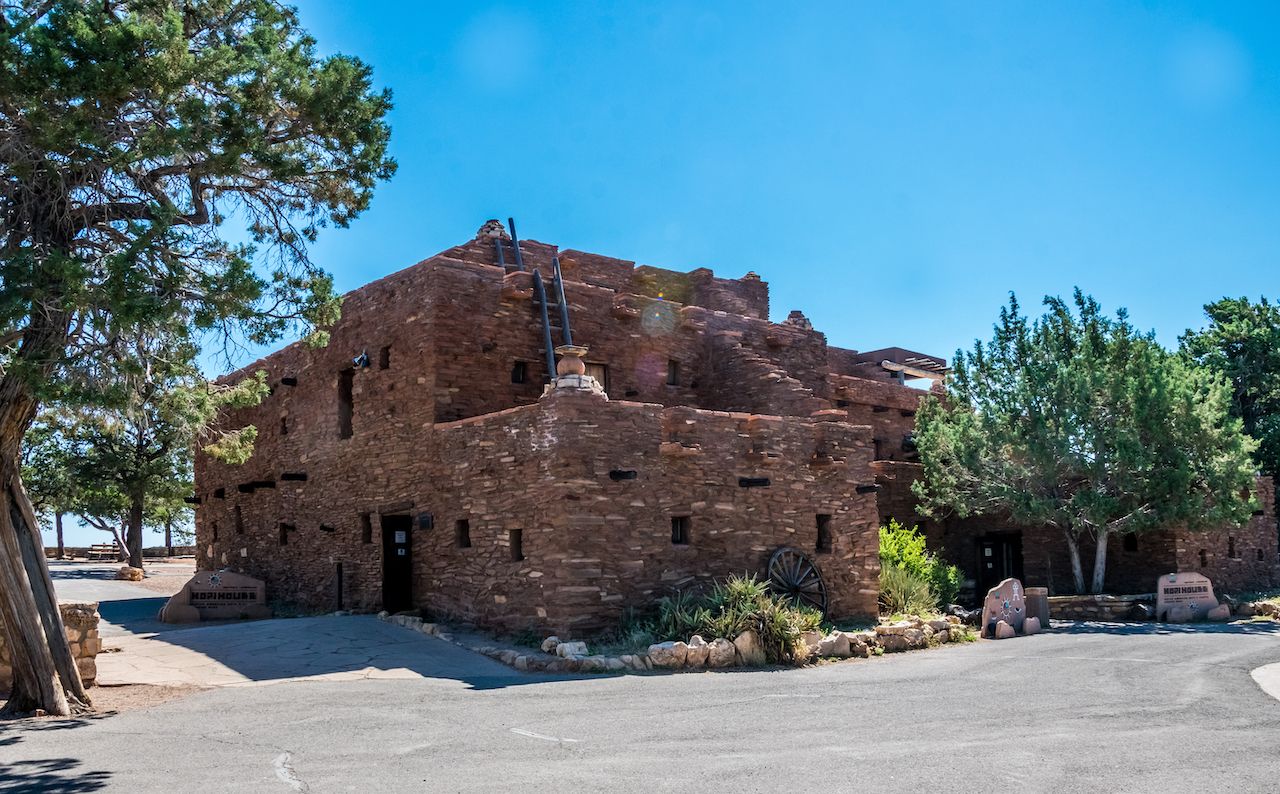
Photo: Konoplytska/Shutterstock
Whether you walk the whole distance or get on the shuttle in between viewpoints, you’ll make it to the Grand Canyon Village. Built to accommodate tourists in 1901, when the railroad was completed, it brought large numbers of visitors to the Grand Canyon. Most of the buildings originate from that era, so they are worth a look.
But before exploring the historic village, make a reservation for dinner at the El Tovar Dining Room in the historic El Tovar Hotel, built in 1903.
Walk across the street for a look at the Train Depot, another national historic landmark, built in 1901 and still working, welcoming visitors who take the train from Williams. Then visit and spend some time in the Hopi House, dating from 1904 and designed by Mary J Colter. While enjoying the architecture of the building, browse the array of Native arts and crafts available. Return to El Tovar before your reservation to spend some time in the lobby and learn about the history of the building.
Dinner
With a menu that reflects the Southwestern culture, and views of the Grand Canyon, the elegant El Tovar Dining Room is the perfect setting for your main meal at the park. Meat lovers can enjoy a hand-cut Arizona-grown fillet mignon while those who prefer seafood should try their signature salmon tostada. Vegetarians are not left out, either, with choices like the falafel platter with mixed greens, hummus, quinoa, and tzatziki.
Watch the sunset across the Grand Canyon.

Photo: dibrova/Shutterstock
For a perfect end of the day, watch the sunset over the Grand Canyon before heading back to your Airbnb in Phoenix. There will be crowds trying to nab the perfect photo, but the Canyon is pretty big — you’ll be able to find your own little spot to enjoy the best view of the state.
Look at the night sky through a telescope at Lowell Observatory.

Photo: Lissandra Melo/Shutterstock
Take the shorter route back, through the South Entrance, and Route 180 to Flagstaff. Since you will reach Flagstaff after dark, drive up to Mars Hill and visit the Lowell Observatory, established in 1894. Learn about the night sky and Earth’s astronomical history, and look through a few different telescopes, even the one used to discover Pluto in 1930. Then head back to Phoenix, taking I-17 South. You’ll probably be exhausted by this point, but if you’re up for it, Phoenix has no shortage of bars and nightlife options to keep the party going.